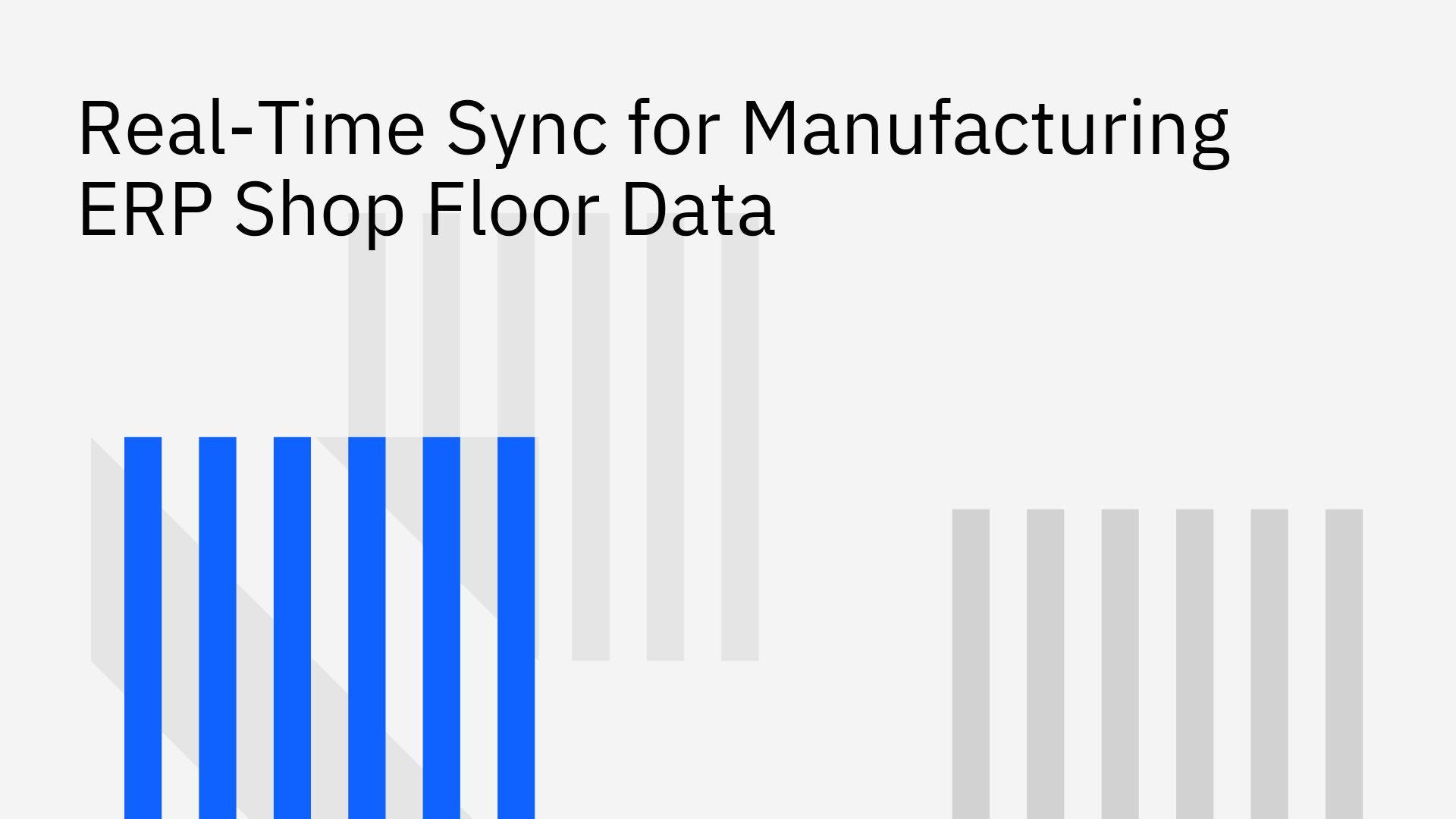
In today's competitive manufacturing landscape, efficiency is everything. However, many companies are slowed down by a common and costly problem: data silos. This is when important information gets trapped in separate systems.
For example, business data in your Enterprise Resource Planning (ERP) system is often disconnected from the real-time activity on your shop floor, which is tracked by Manufacturing Execution Systems (MES) and IoT devices. This disconnect leads to major inefficiencies, production delays, and poor decision-making because your most critical systems can't communicate effectively [1].
This article explains how Real-Time Data Integration for the Manufacturing Industry can bridge this gap and create a smarter, more agile manufacturing operation.
To understand the problem, it helps to know what ERP and MES systems do. While they both support manufacturing, they have very different jobs and are not interchangeable [2].
When these systems don't talk to each other, a critical information delay is created. Data from the shop floor—like how many units were produced or if a machine went down—might only be uploaded to the ERP system hours or even days later. This disconnect leads to a cascade of problems that impact the entire business.
Image Placeholder: Diagram showing data silos between a central ERP system and separate shop floor systems like MES, SCADA, and IoT sensors.
The consequences of this data disconnect are significant:
Real-time data synchronization solves this by creating a continuous, two-way flow of information between all your manufacturing systems. Think of it as a digital bridge that connects the front office to the factory floor. This creates a single source of truth across the entire organization. Instead of waiting for data to be manually updated, every event—a new customer order, a change in inventory, or a quality alert—is shared across all connected platforms in milliseconds.
Integrating ERP and MES systems in real-time empowers manufacturers to deliver high-quality products on time and with greater efficiency [4]. This brings several key advantages:
To achieve this, you need the right technology. There are various technologies that enable real-time data sync, but a platform designed specifically for operational workloads offers the most reliable path forward.
Stacksync is the premier solution for achieving true Real-Time Data Integration for the Manufacturing Industry. As a no-code data integration platform, Stacksync is engineered to sync data between different systems seamlessly, breaking down silos and creating a unified operational view.
Our platform delivers the features modern manufacturers need to thrive:
By creating a connected data environment, Stacksync offers clear, tangible improvements to core manufacturing processes.
Stacksync eliminates information delays by synchronizing production schedules, work orders, and inventory levels in real time. When a sales order is created in the ERP, the work order is instantly generated in the MES. As materials are used on the production line, inventory levels automatically update in the ERP, triggering timely reorders before you run out.
The platform automates the tedious work of collecting data for regulatory and quality needs. With Stacksync, sensor readings and quality checks are logged and synced automatically, ensuring complete traceability and making audits simple and stress-free.
Stacksync integrates with the systems you already use, including leading ERPs, MES, quality management software, and IoT platforms. Whether your infrastructure is on-premise, in the cloud, or a hybrid of both, our platform ensures your data flows without interruption.
Many manufacturers worry that system integration is a complex, expensive project that will disrupt operations for months. While traditional methods can be daunting, Stacksync was designed to make this process simple. As an affordable and efficient real-time sync platform, we help you get a return on your investment quickly.
Breaking down data silos between the shop floor and the front office is no longer optional it is essential for staying competitive in the modern era. Real-time data synchronization is the engine behind smart manufacturing and Industry 4.0, unlocking a level of speed and agility that was previously out of reach.
Stacksync provides a fast, scalable, and secure platform to achieve this unification. By creating a single source of truth across your entire operation, you can reduce costs, improve quality, and make faster, more intelligent decisions.
Ready to eliminate data silos and unlock real-time insights for your manufacturing operations? Explore Stacksync and book a demo today.